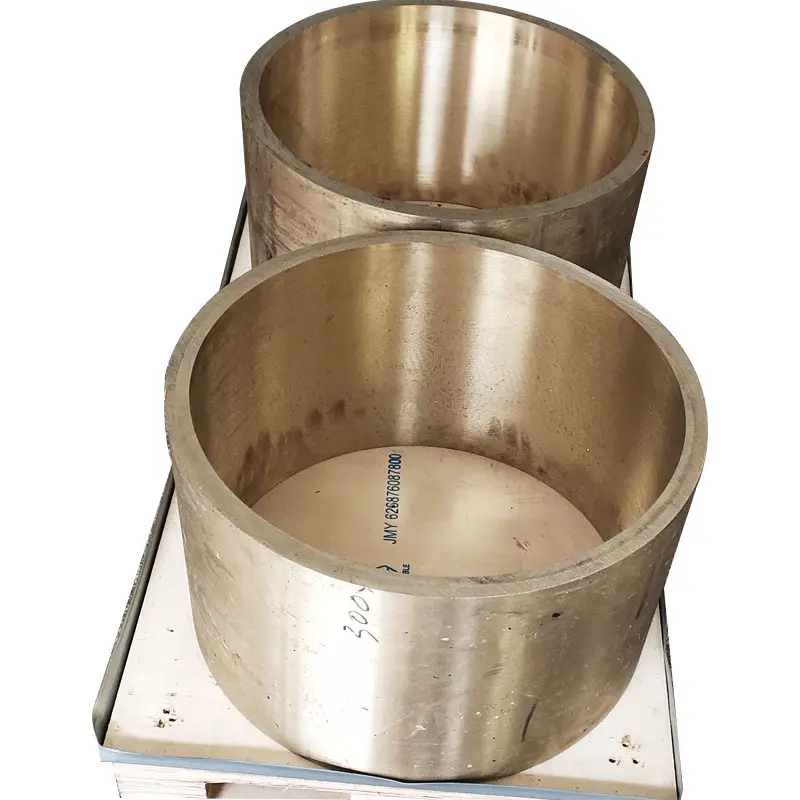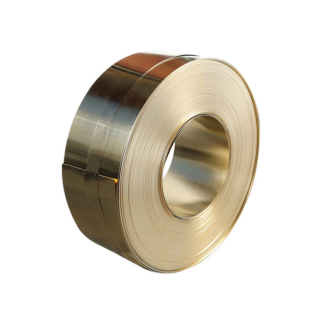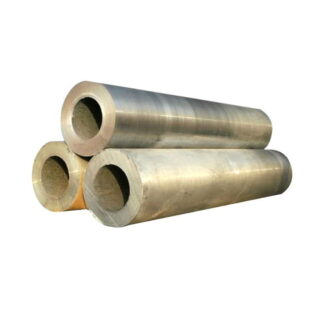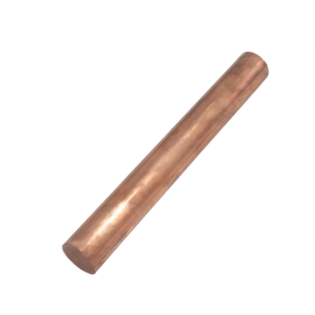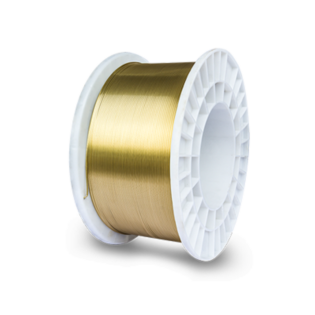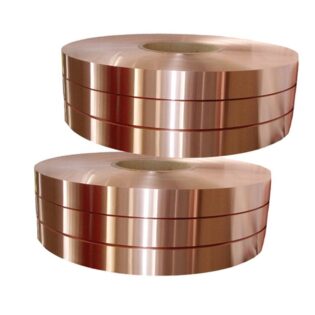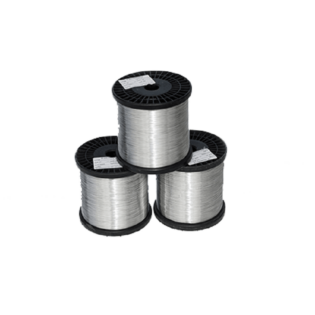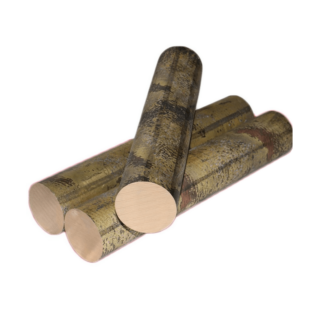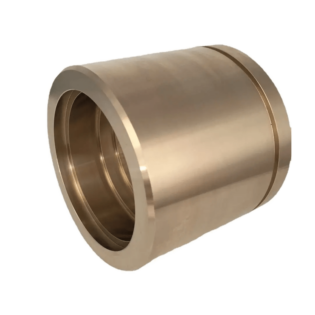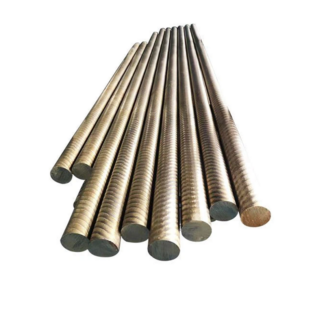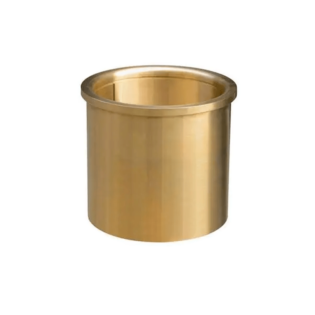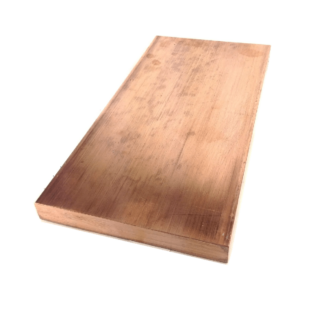C95400 Product description: Aluminum bronze
C95400 Nickel-Aluminum Bronze is a high-performance copper alloy renowned for its exceptional mechanical properties and superior corrosion resistance. This versatile material finds widespread use in marine, industrial, and aerospace applications. Its unique composition, blending copper with aluminum, nickel, iron, and manganese, contributes to its outstanding performance in challenging environments.
Key features of C95400 include:
- Excellent corrosion resistance, particularly in seawater
- High strength and durability
- Good wear resistance
- Non-sparking properties
- Resistance to cavitation
- Ability to maintain strength at elevated temperatures
These characteristics make C95400 an ideal choice for critical components in diverse industries, from shipbuilding to aerospace engineering.
Product Introduction:
C95400 Nickel-Aluminum Bronze is a high-performance copper alloy that combines excellent mechanical properties with superior corrosion resistance. This versatile material is widely used in various industries, particularly in marine, industrial, and aerospace applications. Its unique composition of copper, aluminum, nickel, iron, and manganese contributes to its exceptional performance in demanding environments.
Chemical Composition:
The chemical composition of C95400 is carefully balanced to achieve its desirable properties:
Table 1: Chemical Composition of C95400 (%)
| Element | Percentage |
|---|---|
| Cu | 83.00 min |
| Fe | 3.00-5.00 |
| Ni* | 1.50 |
| Al | 10.00-11.50 |
| Mn | 0.50 |
*Ni value includes Co.
Note: Cu + sum of named elements, 99.5% min. Unless otherwise noted, single values represent maximums.
Mechanical Properties:
C95400 exhibits strong mechanical properties, making it suitable for a wide range of applications:
Table 2: Mechanical Properties of C95400
| Property | US Customary | Metric |
|---|---|---|
| Tensile Strength (min) | 85 ksi | 586 MPa |
| Yield Strength (min) | 32 ksi | 221 MPa |
| Elongation (min) | 12% | 12% |
| Brinell Hardness (3000 kg load, typical) | 170 BHN | 170 BHN |
Performance at Different Temperatures:
C95400 maintains its strength at elevated temperatures, making it suitable for high-temperature applications:
Table 3: Performance at Different Temperatures
| Temperature | Tensile Strength | Yield Strength |
|---|---|---|
| 20°C (68°F) | 586 MPa (85 ksi) | 221 MPa (32 ksi) |
| 200°C (392°F) | 510 MPa (74 ksi) | 200 MPa (29 ksi) |
| 400°C (752°F) | 420 MPa (61 ksi) | 180 MPa (26 ksi) |
Note: Values are approximate and may vary based on specific heat treatments and manufacturing processes.
Industry Applications:
The versatility of C95400 makes it suitable for a wide range of applications across various industries:
Table 4: Industry Applications of C95400
| Industry | Applications |
|---|---|
| Automotive | Weld guns |
| Fasteners | Large hold-down screws, nuts |
| Industrial | Bearing segments, bushings, gears, high-strength clamps, |
| landing gear parts, machine parts, pawl, pickling hooks, | |
| pressure blocks, pump parts, valve components | |
| Marine | Covers for marine hardware, shipbuilding |
| Ordnance | Government fittings |
| Aerospace | Landing gear components, bushings |
| Oil & Gas | Valve bodies, pump components |
Shape and Size Availability:
C95400 is available in various shapes and sizes to meet different manufacturing requirements:
Table 5: Shape and Size Availability
| Shape | Size Range |
|---|---|
| Solids | 1/2″ to 10″ O.D. |
| Tubes | 1 1/8″ to 12″ O.D. (Consult mill for wall thickness) |
| Rectangles | Up to 15″ |
| Standard Lengths | 144″ |
| Other Forms | Semi-finished, mill stock, near-net shapes, |
| anode, bar stock, billet/bloom, squares, | |
| hex, plate, profile or structural shape, | |
| flats/rectangular bar |
Production Standards:
C95400 conforms to various industry standards:
Table 6: Production Standards
| Standard Type | Designation |
|---|---|
| CDA | C95400 |
| ASTM | B505, B505M |
| SAE | J461, J462 |
| Federal | QQ-C-390, G5; QQ-B-671, Class 3 |
| Military | MIL-B-16033, Class 3 |
| Other | Aluminum bronze 9C |
Standards and Corresponding Grades in Different Countries:
C95400 has equivalent or similar grades in various international standards:
Table 7: Standards and Corresponding Grades in Different Countries
| Country | Standard/Grade |
|---|---|
| USA | C95400 (UNS) |
| UK | AB2 (BS) |
| Germany | CuAl10Ni5Fe4 (DIN) |
| Japan | CAC703 (JIS) |
| International | ISO 428-2:2009 CuAl10Ni5Fe4 |
Welding, Processing, and Heat Treatment:
C95400 can be processed using various methods, each with its own characteristics:
Table 8: Welding, Processing, and Heat Treatment
| Process | Recommendations and Characteristics |
|---|---|
| Soldering | Good suitability |
| Brazing | Good suitability |
| Oxyacetylene Welding | Not recommended |
| Gas Shielded Arc Welding | Good suitability |
| Coated Metal Arc Welding | Good suitability |
| Machining | Machinability rating: 60 |
| Use sharp tools and moderate cutting speeds | |
| Polishing | Can achieve high luster with proper techniques |
| Heat Treatment | Solution annealing at 900-950°C, water quench |
| Cold Processing | Limited cold working possible, strain hardening occurs |
Advantages and Disadvantages:
C95400 offers several advantages but also has some limitations:
Table 9: Advantages and Disadvantages of C95400
| Advantages | Disadvantages |
|---|---|
| Excellent corrosion resistance | Higher cost than standard bronzes |
| Good wear resistance | Limited availability |
| High strength | More difficult to machine |
| Non-sparking properties | Heavier than aluminum alloys |
| Good resistance to cavitation | Lower thermal conductivity than pure copper |
| Excellent fatigue resistance | Potential for stress corrosion cracking |
| Good high-temperature strength | Susceptible to selective leaching in some environments |
Similar Products and Comparison:
To better understand C95400’s position among similar alloys, here’s a comparison:
Table 10: Similar Products and Comparison
| Alloy | Cu % | Al % | Ni % | Fe % | Mn % | Tensile Strength (MPa) | Yield Strength (MPa) |
|---|---|---|---|---|---|---|---|
| C95400 | 83 min | 10-11.5 | 1.5 max | 3-5 | 0.5 max | 586 min | 221 min |
| C95500 | 78-82 | 10-11.5 | 3-5.5 | 3-5.5 | 3.5 max | 690 min | 280 min |
| C95800 | 79-82 | 8.5-9.5 | 4-5 | 3.5-4.5 | 1.5 max | 585 min | 240 min |
| C95700 | 71-79 | 10-12 | 4.5-6 | 4-5.5 | 1.5 max | 620 min | 275 min |
Physical Properties:
Understanding the physical properties of C95400 is crucial for its application in various environments:
Table 11: Physical Properties of C95400
| Property | US Customary | Metric |
|---|---|---|
| Melting Point – Liquidus | 1900 °F | 1038 °C |
| Melting Point – Solidus | 1880 °F | 1027 °C |
| Density | 0.269 lb/in³ at 68 °F | 7.45 gm/cm³ at 20 °C |
| Specific Gravity | 7.45 | 7.45 |
| Electrical Conductivity | 13% IACS | 0.075 MegaSiemens/cm at 20 °C |
| Thermal Conductivity | 33.9 Btu/sq ft/ft hr/°F at 68 °F | 58.7 W/m at 20 °C |
| Coefficient of Thermal Expansion | 9 · 10⁻⁶ per °F (68-572 °F) | 15.5 · 10⁻⁶ per °C (20-300 °C) |
| Specific Heat Capacity | 0.1 Btu/lb/°F at 68 °F | 419 J/kg at 20 °C |
| Modulus of Elasticity in Tension | 15500 ksi | 107000 MPa |
| Magnetic Permeability (As cast) | 1.27 | 1.27 |
| Magnetic Permeability (TQ 50 temper) | 1.2 | 1.2 |
These physical properties contribute to C95400’s performance in various applications. The high melting point allows for use in elevated temperature environments, while the relatively high density provides good wear resistance and strength. The moderate thermal and electrical conductivity make it suitable for applications where heat dissipation is important but not critical.
Fabrication Properties:
Understanding the fabrication properties of C95400 is crucial for manufacturers and engineers:
Table 12: Fabrication Properties of C95400
| Fabrication Method | Suitability/Characteristics |
|---|---|
| Soldering | Good |
| Brazing | Good |
| Oxyacetylene Welding | Not recommended |
| Gas Shielded Arc Welding | Good |
| Coated Metal Arc Welding | Good |
| Machining | Moderate (Machinability rating: 60) |
| Forging | Good (Typical forging temperature: 1600-1800°F / 870-980°C) |
| Hot Working | Good (Typical hot working temperature: 1300-1600°F / 700-870°C) |
| Cold Working | Limited (Work hardens rapidly) |
| Heat Treatment | Responsive to heat treatment for property enhancement |
C95400 exhibits good weldability using gas shielded arc welding and coated metal arc welding techniques. However, oxyacetylene welding is not recommended due to the risk of altering the alloy’s composition. The material’s moderate machinability (rating of 60) suggests that while it can be machined, it may require more effort and specialized tooling compared to more easily machinable alloys.
Compliance and Regulations:
C95400 Nickel-Aluminum Bronze complies with several important regulations, particularly those related to water systems and environmental safety:
Table 13: Compliance of C95400
| Legislation/Regulation | Compliance Status |
|---|---|
| Federal Safe Drinking Water Act (SDWA) | Compliant |
| S. 3874 Federal Reduction of Lead in Drinking Water Act | Compliant |
| California AB1953 | Compliant |
| Vermont Act 193 | Compliant |
| RoHS (Restriction of Hazardous Substances) | Compliant |
| REACH (Registration, Evaluation, Authorization and Restriction of Chemicals) | Compliant |
This compliance ensures that C95400 can be used in a wide range of applications, including those involving contact with drinking water, without posing health or environmental risks.
Corrosion Resistance:
One of the most significant advantages of C95400 is its excellent corrosion resistance in various environments:
Table 14: Corrosion Resistance of C95400 in Various Environments
| Environment | Corrosion Resistance Rating |
|---|---|
| Seawater | Excellent |
| Fresh Water | Excellent |
| Brackish Water | Excellent |
| Sulfuric Acid (Dilute) | Good |
| Hydrochloric Acid (Dilute) | Moderate |
| Nitric Acid (Dilute) | Poor |
| Alkaline Solutions | Excellent |
| Industrial Atmospheres | Excellent |
| Marine Atmospheres | Excellent |
The excellent corrosion resistance in seawater and marine atmospheres makes C95400 an ideal choice for marine hardware, propellers, and shipbuilding components. Its resistance to industrial atmospheres also contributes to its widespread use in various industrial applications.
Conclusion:
C95400 Nickel-Aluminum Bronze is a versatile and high-performance alloy that offers a unique combination of mechanical strength, corrosion resistance, and wear resistance. Its wide range of applications across various industries, from marine to aerospace, demonstrates its versatility and reliability. While it may have some limitations, such as higher cost and limited availability compared to standard bronzes, its superior properties make it an excellent choice for demanding environments and critical applications.
The alloy’s compliance with various environmental and safety regulations further enhances its appeal, particularly in applications involving potable water systems. Its ability to maintain strength at elevated temperatures also makes it suitable for high-temperature applications.
When selecting materials for specific applications, engineers and designers should consider the unique properties of C95400, including its excellent corrosion resistance, good wear resistance, and high strength. However, they should also be aware of its limitations, such as the potential for stress corrosion cracking in certain environments and its higher density compared to aluminum alloys.
Overall, C95400 Nickel-Aluminum Bronze continues to be an important material in the field of copper alloys, offering a balance of properties that make it indispensable in many critical applications across various industries.

